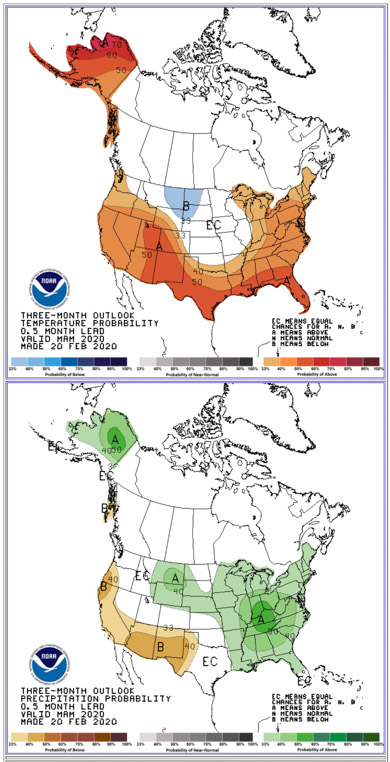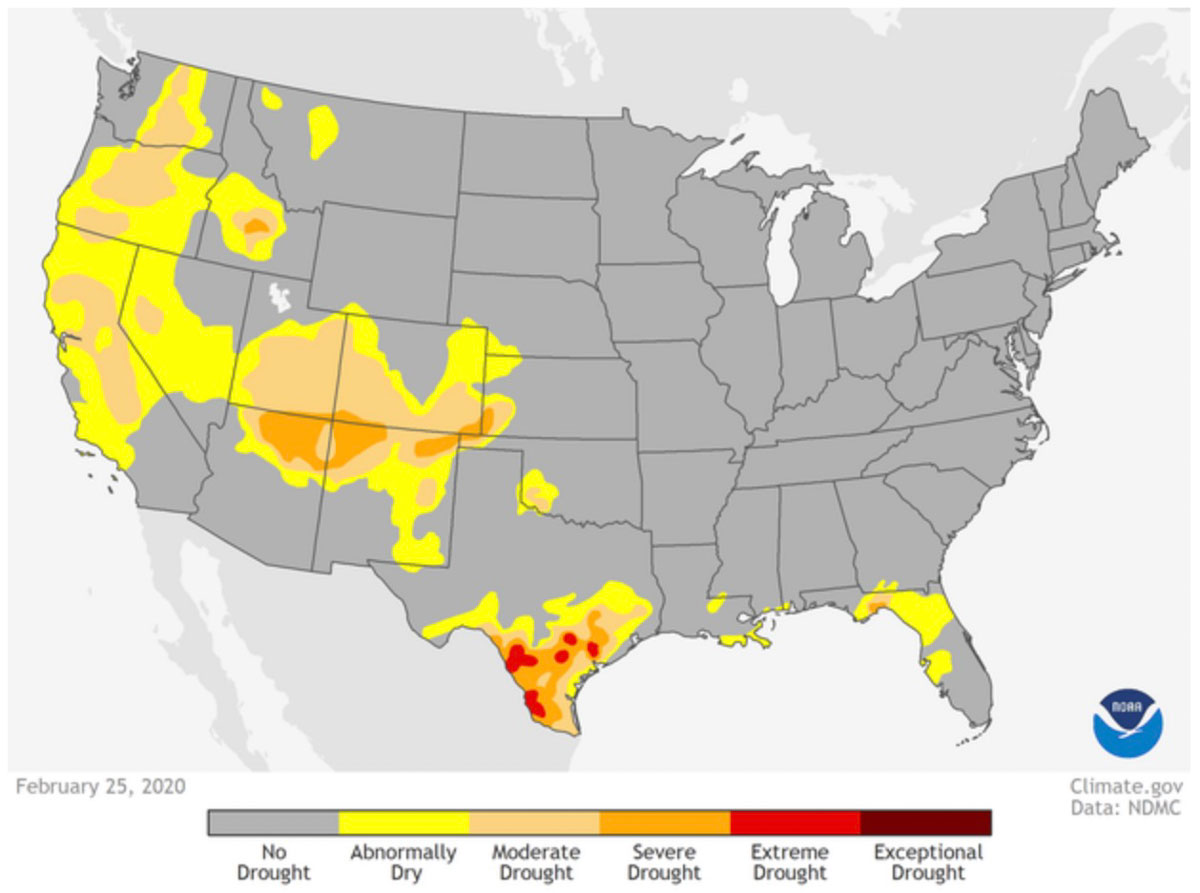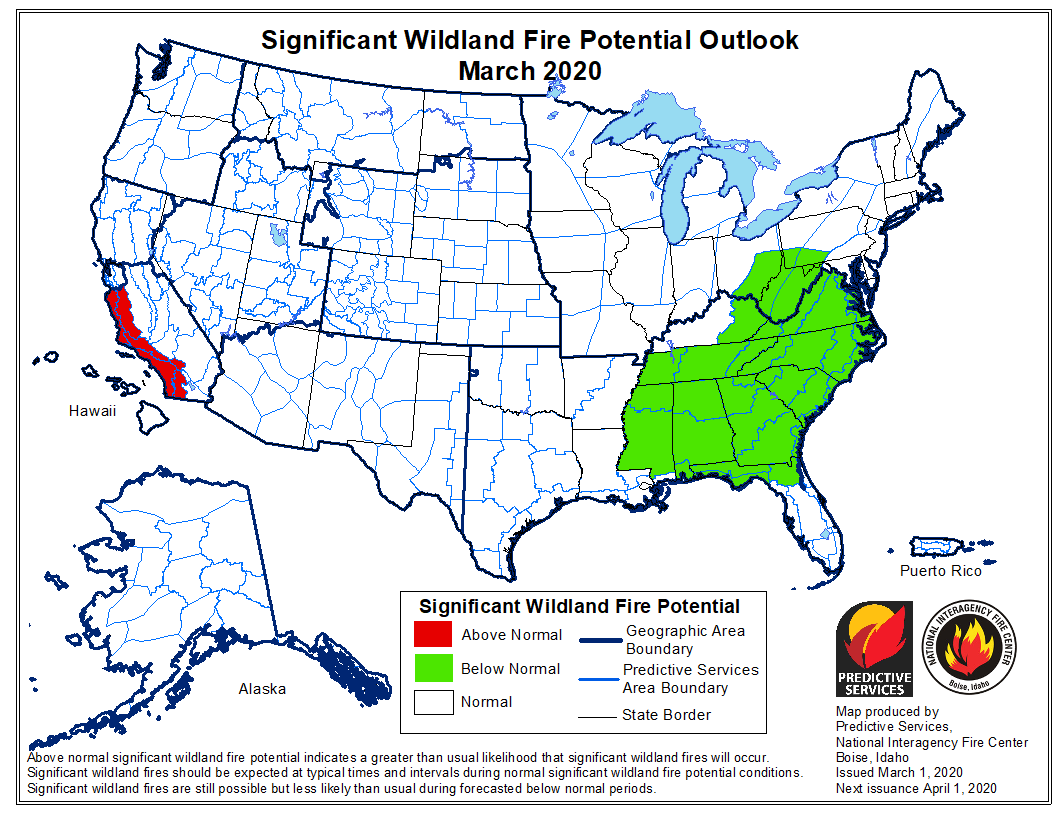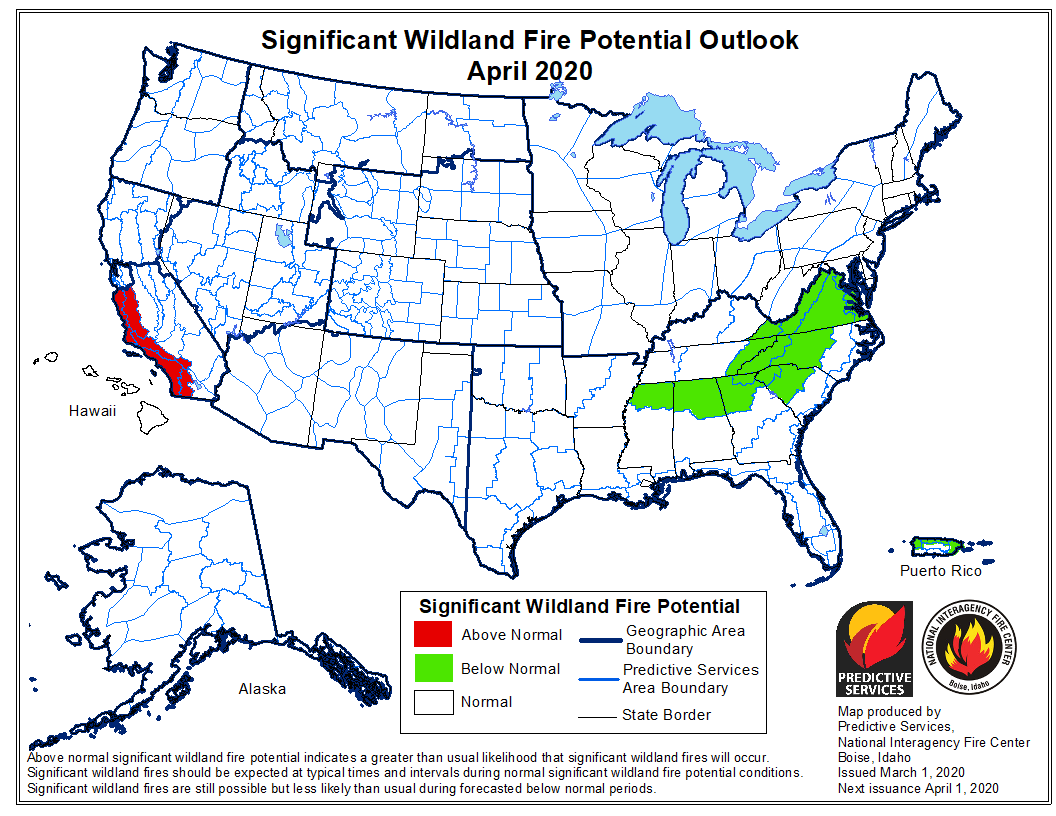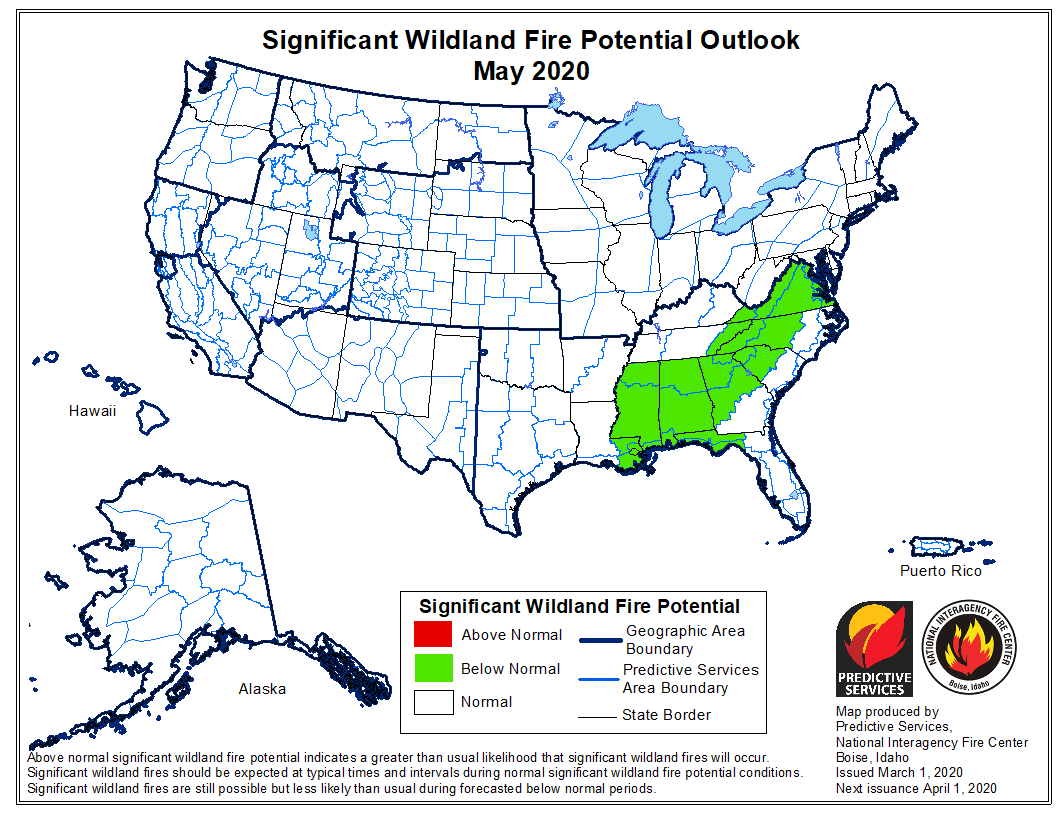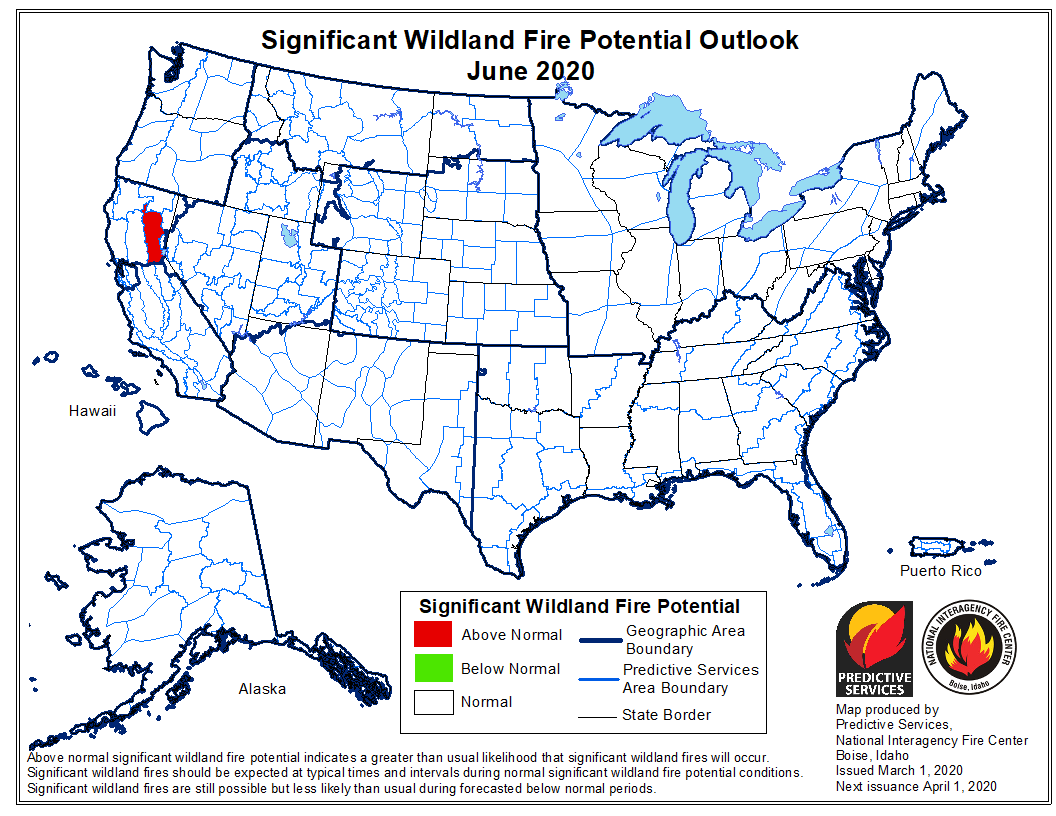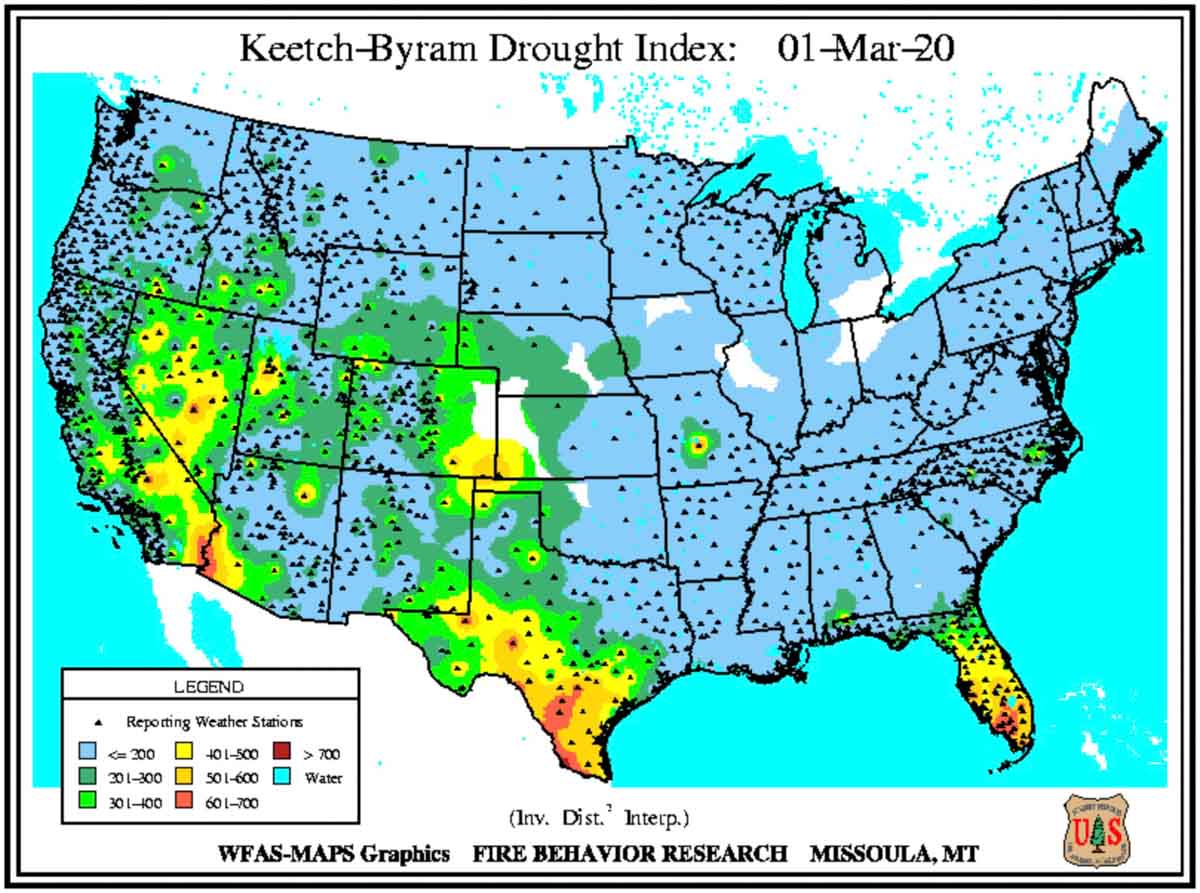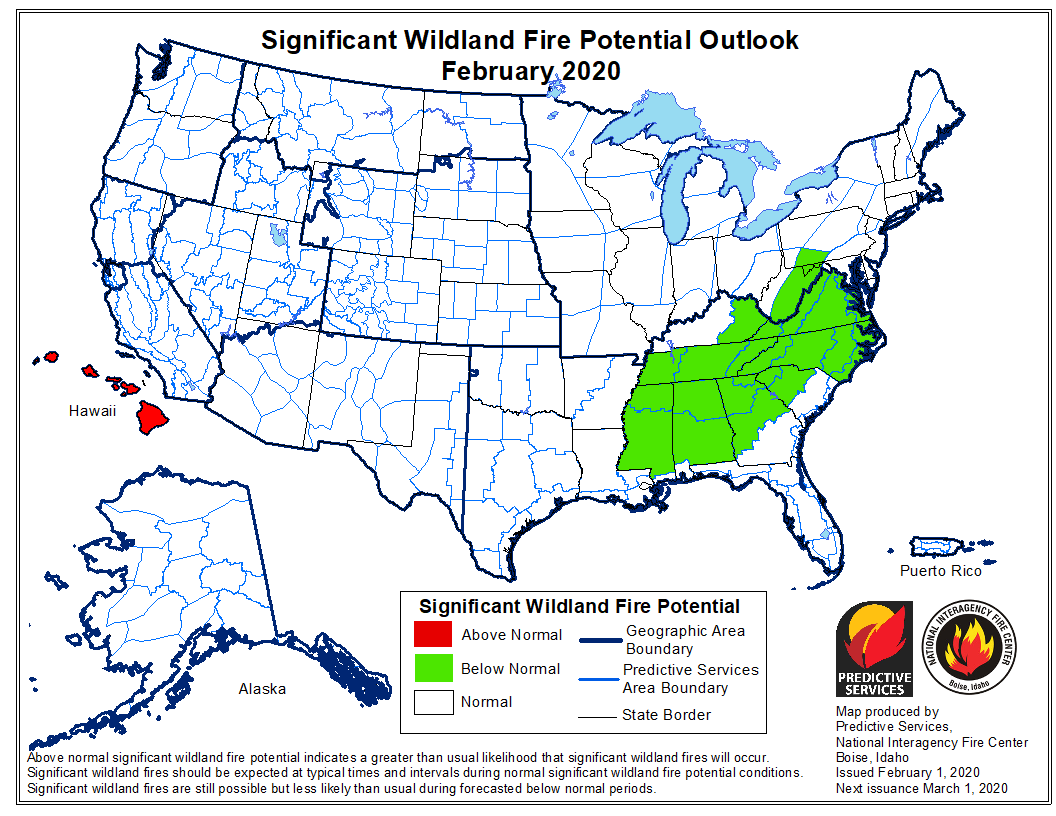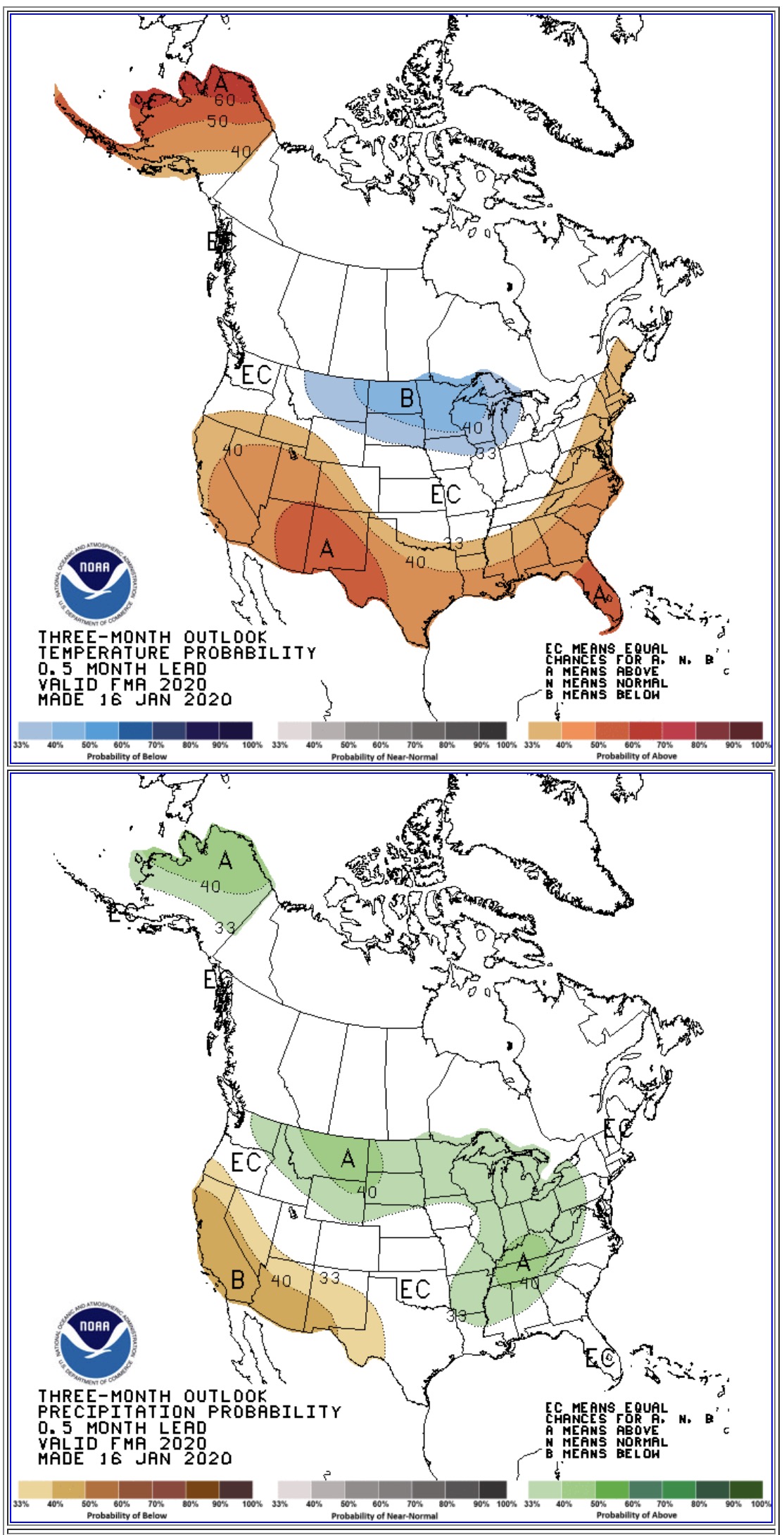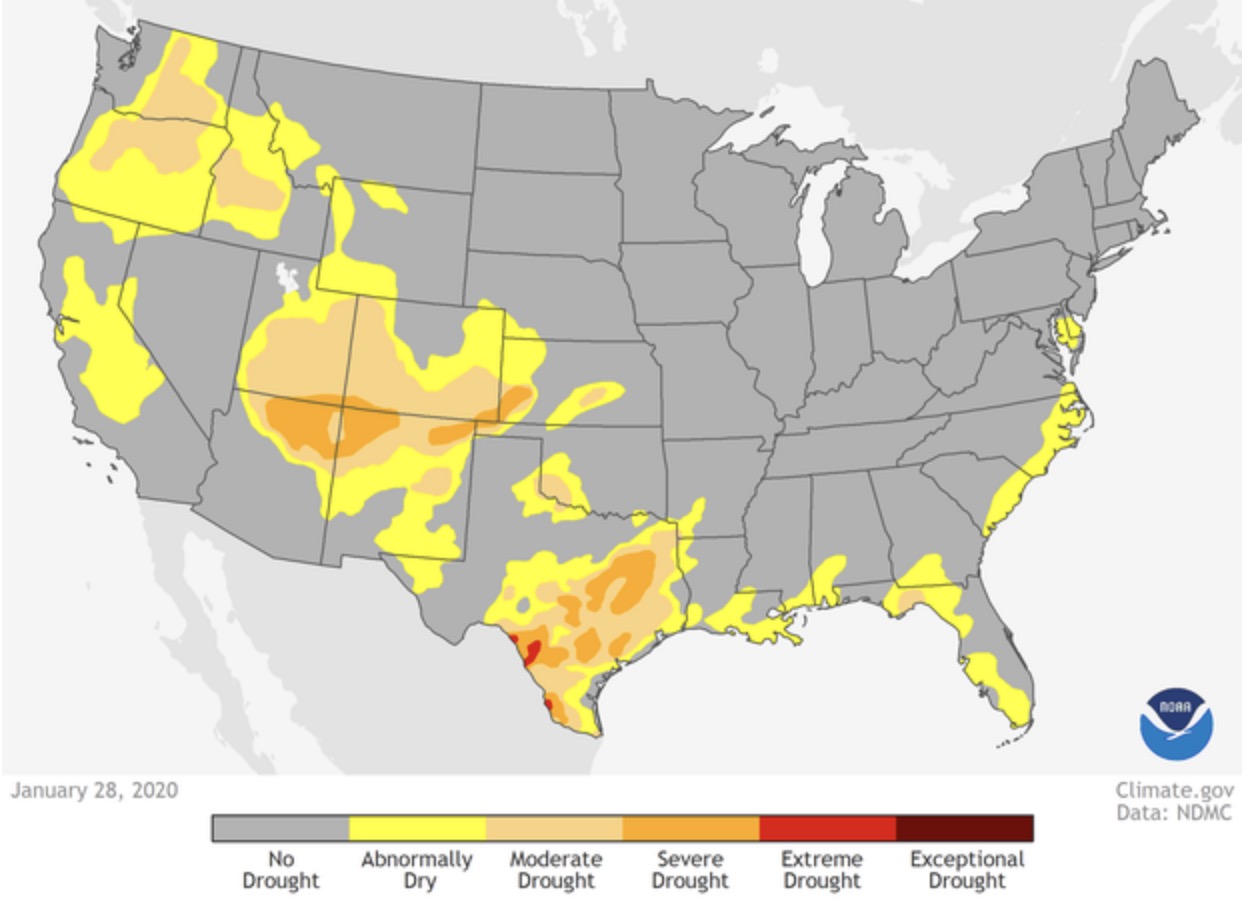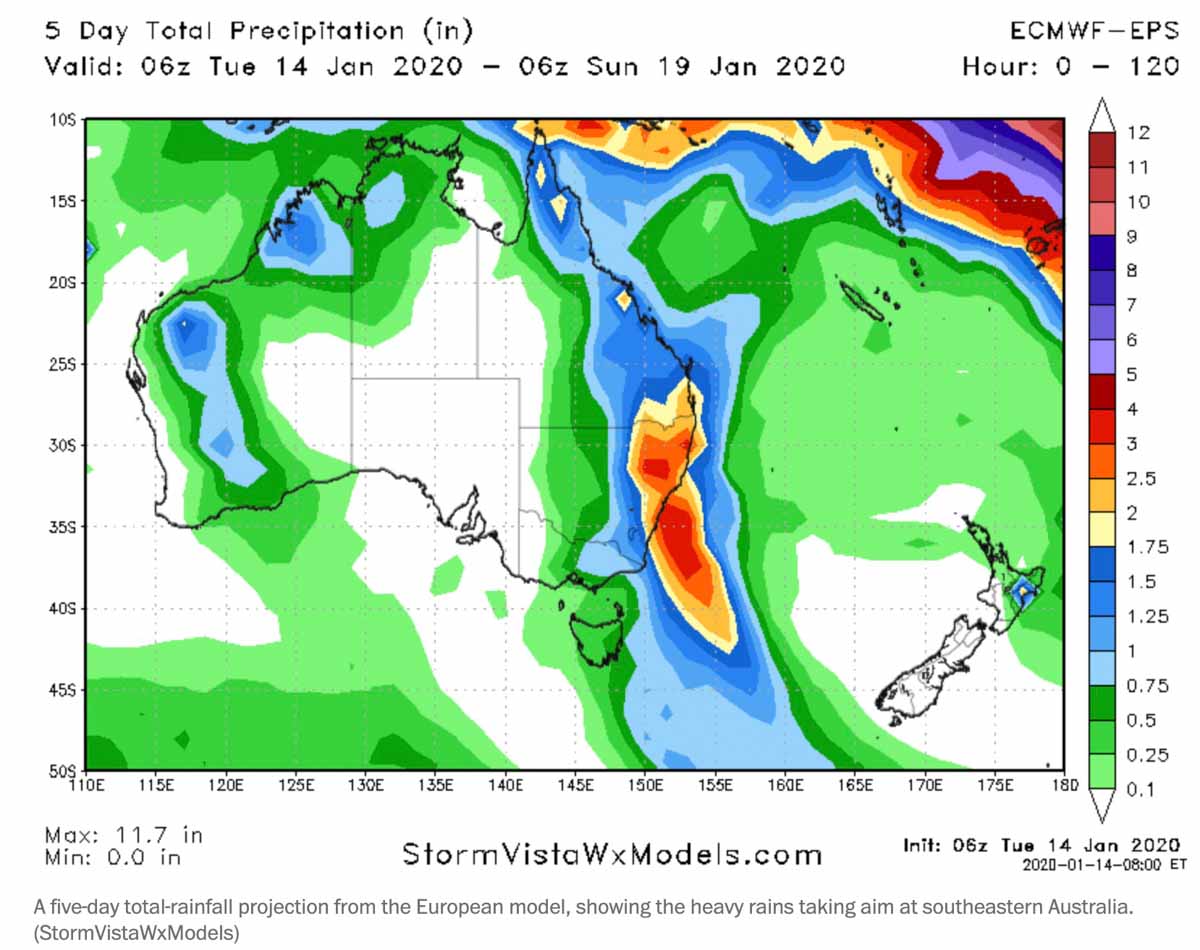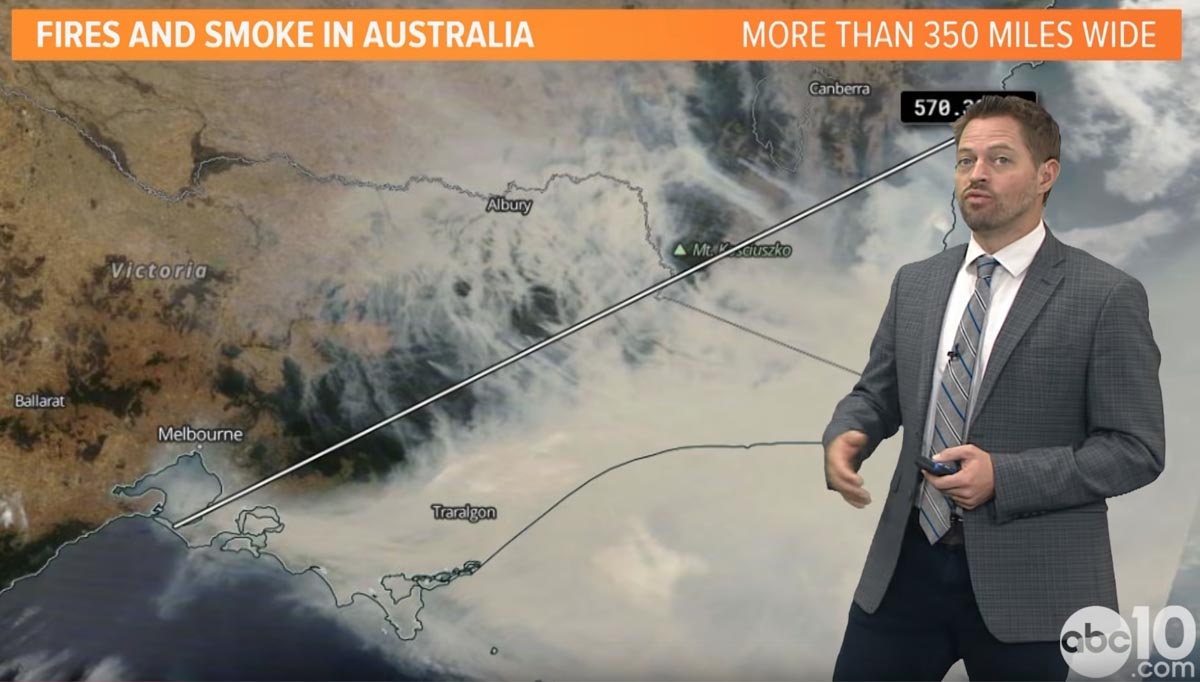The Predictive Services section at the National Interagency Fire Center has issued their Wildland Fire Potential Outlook for March through June. The data represents the cumulative forecasts of the ten Geographic Area Predictive Services Units and the National Predictive Services Unit.
If NIFC’s analysis is correct the only area with above average potential for wildfires during March and April will be the coastal areas of Central and Southern California.
Below:
- An excerpt from the NIFC narrative report for the next several months;
- More of NIFC’s monthly graphical outlooks;
- NOAA’s three-month temperature and precipitation forecasts;
- Drought Monitor;
- Keetch-Byram Drought Index.
Entering March and continuing through April, the prolonged periods of dry conditions across Southern California may lead to periods of elevated fire potential during days experiencing offshore winds. However, a muted greenup should initially limit activity. Normal to Below Normal significant large fire potential is expected along the Rocky Mountain Front during the pre-greenup period due to sufficiently wet or snowy conditions experienced during late winter.
Both the Southwest and Alaska will gradually transition into fire season in May with both regions peaking in activity by late June. Overall Normal significant large fire potential is expected during the period except possibly across northern and western portions of Arizona and across portions of South Central Alaska including the Kenai Peninsula where conditions were drier than average over the past winter.
[…]
[In Southern California] well below average rainfall and above average temperatures are expected to continue through April. Due to the lack of significant rainfall, fine fuels are curing rapidly across the lower elevations and will be completely cured by the middle or end of March. There will be an above average potential for large fires across the lower elevations of the Central Coast and Southern California due to the early curing of fine fuels. A near average amount of offshore wind events will most likely continue to occur through April. These winds will fan any new ignitions and rapid rates of spread and long range spotting will be likely in continuous dead fuel beds. The potential for large fire development will become Normal across all of Central and Southern California May and June as the interior warms up and the offshore wind season comes to an end.
